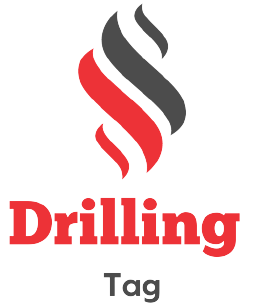Introduction
Drill bits play an important role in the oil and gas industry, penetrating the earth’s surface and creating boreholes to extract valuable resources. Their importance cannot be overstated, as they are essentially the “teeth” that allow drilling rigs to dig deep into the earth and access underground reservoirs. Throughout history, drilling bits have evolved significantly, with constant innovation and advancements driving the industry forward.

The Birth of Drilling Bits
Before the advent of modern drilling bits, ancient civilizations used primitive tools and techniques for drilling. From the use of simple wooden rods to primitive tools such as “curve brackets”, early drilling methods were difficult and time-consuming. However, in the late 1800s, the introduction of rotary drilling enabled the creation of the first true drilling bits. These early bits featured a rotating mechanism and sharp blades, revolutionizing the drilling industry.
Major innovations in drilling bits
Advances in cutting materials and designs
Impact of carbide and diamond tipped bits
Over the years, drilling bits have undergone significant innovations. A notable development was the introduction of cutting materials such as tungsten carbide, which greatly increased the durability and cutting performance of bits. Another important development was the addition of diamond-tipped bits, where natural or synthetic diamonds were used on the cutting surfaces, allowing greater drilling accuracy and penetration into challenging formations.
Drilling Bit Anatomy: Understanding the Components
To understand the complexities of drilling bits, it is important to understand their various components. A typical drilling bit consists of the following main parts:
Bit Body: The main body of the bit, which provides structural integrity.
Cutting Structure: The outer surface area responsible for the actual drilling operation.
Shank: The connection point between the bit and the drill string.
Nozzles: Small holes for circulating drilling fluid to cool and clean the drilling area.
Bearings: Rotating components that facilitate smooth drilling operations.
you may read drilling rig comments
Gauge: The outer diameter of the bit, ensuring proper hole size and stability.
Each component contributes to the overall performance and longevity of the drilling bit.
Conventional Drilling Bits
Conventional drilling bits encompass a range of designs that have been used for various drilling applications. Some common types of conventional drilling bits include:
Three Cone Bits:
Designed with three rotating cone-shaped cutters, suitable for soft shapes.
Drag Bits
Strong, flat-bladed, ideal for shallow drilling and non-stressed formations.
PDC Bits (Drill bit)
Equipped with polycrystalline diamond compact cutters, offer improved stability and performance in tight formations.
Two Center Bits:
Designed specifically for directional drilling, allowing greater control and precision.
Each type of conventional drilling bit has its own unique characteristics and applications, catering to specific drilling needs.
Advanced Drill Bit Technologies
In recent years, the drilling industry has witnessed the emergence of advanced drill bit technologies, significantly increasing drilling performance and efficiency. One such technology is the Polycrystalline Diamond Compact (PDC) bit, which integrates the diamond cutter into the matrix material, providing exceptional stability and speed in penetrating challenging formations. Another notable development is the development of roller cone bits, which use a rotating cone-shaped cutter with an improved design for improved drilling capabilities.
Evolution of Drilling Techniques
Drilling bits have played an important role in the evolution of drilling techniques, enabling the industry to reach new depths and access previously inaccessible reservoirs. Horizontal drilling, made possible by special drilling bits, allows resources to be extracted from multiple angles to maximize production. Directional drilling techniques, using advanced bit designs, enable precise drilling along predetermined paths. Using advanced drilling bit technologies, extended reach drilling techniques have increased access to wells, unlocking previously unimagined reservoirs.
Innovations in Drill Bit Manufacturing
The manufacturing process behind drill bits has evolved considerably to meet the demands of the industry. Computer-aided design (CAD) and simulations have revolutionized the design and analysis phase, allowing rapid prototyping and optimization. Additionally, the emergence of 3D printing technology has opened up new possibilities in drill bit manufacturing, enabling the production of complex shapes and customized designs, ultimately increasing efficiency and productivity.
Automation and Robotics in Drilling Bit Operations
Automation and robotics are reshaping the drilling landscape, including drilling bit operations. The integration of advanced technologies allows for increased accuracy, efficiency and safety in drilling. Autonomous drilling systems, powered by artificial intelligence and machine learning, offer many advantages, including improved drilling parameters, reduced downtime, and improved wellbore quality.
Drilling bit maintenance and repair
Proper maintenance practices are essential to maximize the life and effectiveness of drilling bits. Regular inspection, cleaning and maintenance are essential to prevent premature wear and failure. Bit optimization techniques, such as adjusting weight on the bit (WOB) and optimizing drilling parameters, play an important role in achieving optimal drilling performance and longevity.
Future Outlook and Trends
Looking ahead, the future of drilling bits looks promising. Advances in materials, design, and manufacturing processes are expected to further expand drilling bit capabilities. Improved wear-resistant coatings, intelligent sensors, and advanced data analytics are likely to revolutionize drilling practices, ushering in a new era of efficiency, sustainability, and exploration possibilities.
Summary
The humble drilling bit has come a long way since its inception, revolutionizing the oil and gas industry. From ancient devices to modern technological marvels, these remarkable devices have played an important role in the exploration of energy resources. As drilling bit technology continues to evolve, the industry can expect even greater breakthroughs and advances in the pursuit of energy extraction.
Frequently Asked Questions
What are the different types of drilling bits?
Tricone Bits, Drag Bits, PDC Bits, Bi-Center Bits, and more.
How do drilling bits contribute to drilling efficiency?
Drilling bits enable penetration and borehole formation, maximizing drilling efficiency.
What material is commonly used in the construction of a modern drill bit?
Tungsten carbide, polycrystalline diamond compact, and diamond-like carbon coatings are commonly used.
Can drilling bits be recycled?
Yes drilling bits can often be recycled or reconditioned.
How long do drilling bits usually last before needing replacement?
The lifespan of drilling bits depends on various factors such as the condition of the drilling and can range from several hours to several months.
Additional Resources

